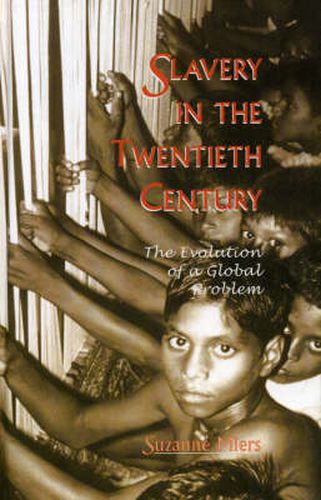Readings Newsletter
Become a Readings Member to make your shopping experience even easier.
Sign in or sign up for free!
You’re not far away from qualifying for FREE standard shipping within Australia
You’ve qualified for FREE standard shipping within Australia
The cart is loading…






In her new book Suzanne Miers places modern slavery in its historical context, tracing the development of the international anti-slavery movement over the last hundred years, and demonstrating how the problems of eradication seem greater and more intractable today than they had ever been. She shows how and why slavery has expanded to include new forms between 1919 to 2000, many times crueller than the chattel slavery so familiar to the public mind. The author describes the targets of on-going anti-slavery campaigns, including forced labour, forced prostitution, forced marriage, the exploitation of child labour and of migrant and contract labour. She also reveals the extraordinary proliferation of non-governmental organizations such as the Working Group on Contemporary Forms of Slavery and UN specialized agencies and the lack of political will on the part of member nations to give it powers of enforcement. Miers centres the story on British policy, which has led to efforts to suppress the slave trade since the late 18th century. She draws upon her extensive work in Africa, which has attracted the greatest humanitarian and international attention, and where in some areas, slavery has been deliberately covered up by the descendants of both slaves and owners. Researchers and readers in world history, slavery, human rights, African and African American history, international relations, and race and ethnic studies should find it a valuable resource.
$9.00 standard shipping within Australia
FREE standard shipping within Australia for orders over $100.00
Express & International shipping calculated at checkout
In her new book Suzanne Miers places modern slavery in its historical context, tracing the development of the international anti-slavery movement over the last hundred years, and demonstrating how the problems of eradication seem greater and more intractable today than they had ever been. She shows how and why slavery has expanded to include new forms between 1919 to 2000, many times crueller than the chattel slavery so familiar to the public mind. The author describes the targets of on-going anti-slavery campaigns, including forced labour, forced prostitution, forced marriage, the exploitation of child labour and of migrant and contract labour. She also reveals the extraordinary proliferation of non-governmental organizations such as the Working Group on Contemporary Forms of Slavery and UN specialized agencies and the lack of political will on the part of member nations to give it powers of enforcement. Miers centres the story on British policy, which has led to efforts to suppress the slave trade since the late 18th century. She draws upon her extensive work in Africa, which has attracted the greatest humanitarian and international attention, and where in some areas, slavery has been deliberately covered up by the descendants of both slaves and owners. Researchers and readers in world history, slavery, human rights, African and African American history, international relations, and race and ethnic studies should find it a valuable resource.